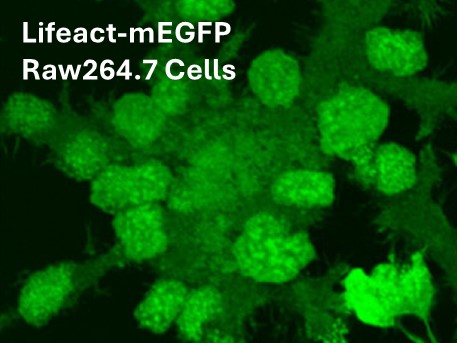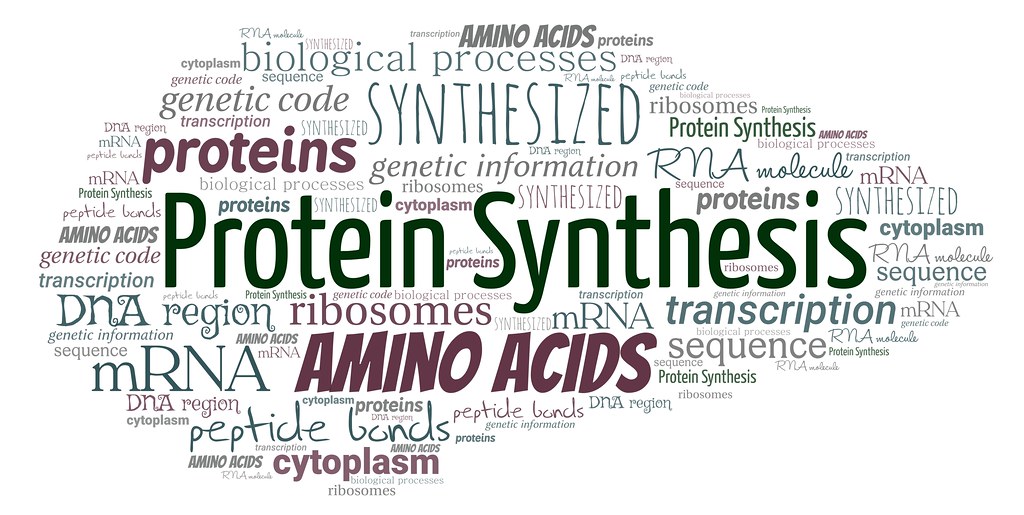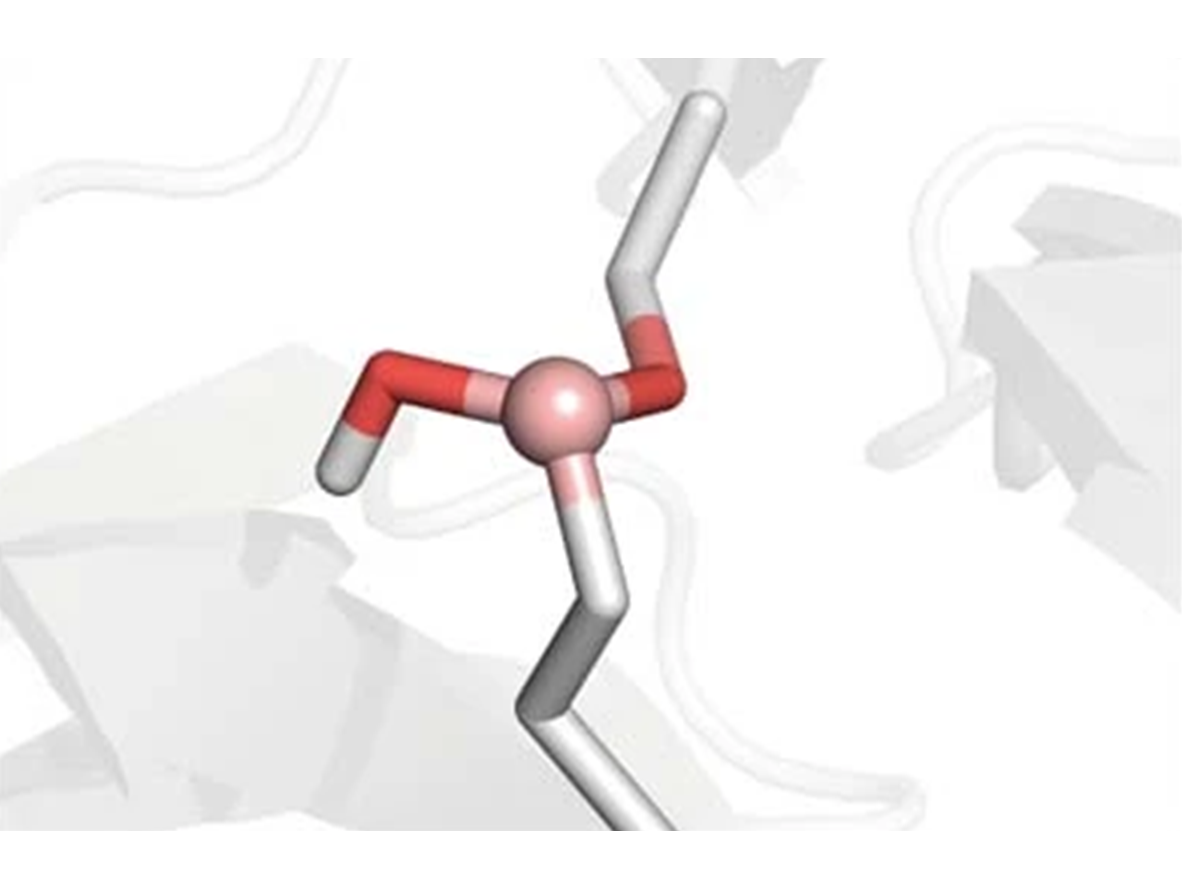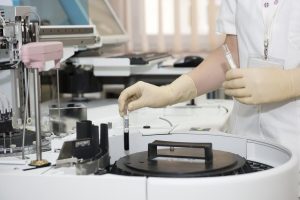Automated Microfluidic System for Point-of-Care Detection of Pathogens
An automated sample-to-answer microfluidic platform that integrates a cell-free glucogenic gene circuit assay for molecular diagnostics
Read more...Keywords:
Diagnostics, Research ToolsCollateral Cleavage using Chimeric Reporters for CRISPR-Based Diagnostics
A novel class of chimeric reporters that significantly improve the RNA trans-cleavage efficiency of Cas12 enzymes, offering a robust alternative to traditional ssDNA reporters.
Read more...Keywords:
Research Tools, DiagnosticsHigh Throughput Assay for Cytochrome P450 Drug and Agrochemical Toxification
A novel high-throughput assay called PEXIL (Paralleled screens for Enzyme-activated Xenobiotic-Induced Lethality) that reveals P450-mediated toxification of small molecules.
Read more...Keywords:
Research ToolsMicrofluidic Platform for High-Throughput Endothelial Cell-Based Assays
A novel microfluidic device designed for efficient endothelial cell-based assays.
Read more...Keywords:
Research ToolsSingle-Molecule Protein Sequencing Using N-Terminal Specific Probes
A novel method for sequencing polypeptides at the single-molecule level. This approach involves the use of a set of optical probes comprising variants of CIpS proteins from E. coli each capable of selectively binding a specific N-terminal amino acid.
Read more...Keywords:
Reagent, Research ToolsProtein Sequencing Imaging-Based Methods and Reagents
Molecular imaging–based methods, assays, and reagents that are useful for sequencing proteins.
Read more...Keywords:
Reagent, Research ToolsCovalent Drug Target Discovery through Residue-Agnostic Assessment
A ligandability assessment tool for covalent inhibitor development.
Read more...Keywords:
Therapeutics, Research ToolsMicrofluidic Device and Pump System for Vascularization of Organoids
A novel pump-based system for culturing perfusable blood vessels and vascularizing organoids called VIVOS (Vascularized In Vitro Organ Systems). The system consists of an impeller pump connected to a microfluidic device housing a tissue compartment
Read more...Keywords:
Research ToolsMaturation Medium for Induced Pluripotent Stem Cell-Derived Cardiomyocytes
A novel and defined culture medium for the functional maturation of iPSC-derived cardiomyocytes (iPSC-CMs)
MayoMaxTM Media now commercially available (AxolBio)
- https://axolbio.com/new-myomaxtm-media-enhances-ipsc-derived-cardiomyocyte-maturity-for-superior-in-vitro-cardiac-models/
Keywords:
Research ToolsLifeAct-GFP RAW264.7 Cells: A Novel Tool for Studying Osteoclastogenesis
A stable Lifeact–mEGFP-transfected RAW264.7 cell line to examine the role of actin filaments in fusion during osteoclastogenesis.
Read more...Keywords:
Research ToolsUltrasound Device for Measurement of Cardiomyocyte Contractility
A ultrasound system capable of detecting cardiomyocyte contractility parameters (i.e. beat rate, beat rhythm, force of contraction) at scales ranging from single cells to 3D microtissue constructs.
Read more...Keywords:
Research ToolsPhosphoproteome Determination using Bioengineered SH2 Domain Superbinders
Researchers at the University of Toronto have proposed a set of cost-effective pTyr enrichment tools (AffiniPure) that can recover a greater percentage of the pTyr-proteome. The technology relies on a set of SH2 domains, which bind pTyr residues, that are bioengineered to be superbinders.
Read more...Keywords:
Research ToolsA Screening Platform to Identify Protein-Protein Interactions and PPI Inhibitors
Determining and modifying protein-protein interactions (PPIs) are important because their alterations are involved in various diseases. Although numerous techniques are available for studying PPIs, each one is accompanied by various limitations (e.g. high cost, requirement for labeling, inability to recapitulate in vivo conditions, incompatibility with HTS formats and the requirement for highly specialized equipment and expertise). To maximize the capability to explore PPIs, our researchers recently invented Split-Intein Mediated Protein Ligation (SIMPL) where a PPI association event is coupled to intein-mediated ligation. However, the ELISA readout conventionally used with this assay is expensive, time-consuming and cumbersome necessitating an improved detection system.
Read more...Keywords:
Research ToolsCell Line for SARS-CoV-2 Drug Compound Screening
Researchers at the University of Toronto have developed a SARS-CoV-2 replicon that achieves three goals: ensures biological safety by mutating genes that are known to be essential for the ability of SARS-CoV-2 to generate infectious viral particles; engineered the replicon in a manner that renders it highly adaptable for high throughput screening facilities; the design ensures full functionality of SARS-CoV-2 molecular replication, polypeptide maturation and organization thus rendering it a high fidelity biologically safe and highly adept tool for screening for inhibitors of SARS-CoV-2.
Read more...Keywords:
Research ToolsSerum-Free Cell Culture Media Design Using an Artificial Intelligence Algorithm
Serum-free cell culture media design is important because it offers the opportunity to construct chemically defined media that possess greater batch-to-batch reproducibility and clinically compatible reagents; benefits not necessarily associated with serum-containing media. As such, it is an ideal method for producing media for the growing cell therapy market segment where high quality and reproducibility standards influence clinical translation. However, the use of defined chemical factors often creates a complex, large-scale optimization problem where the number of possible combinations of factors across different dose concentrations creates a search space so large that only a millionth or less of it can be sampled. Consequently, this renders traditional media optimization techniques ineffective and necessitates the development of new techniques to handle this problem.
Read more...Keywords:
Research Tools, Artificial Intelligence (AI)Sensitive and Parallel Detection of Small Molecules Using Barcoded Aptamers
Small molecules like metabolites and drugs are at the core of healthcare. The levels of vitamins, hormones, sugars and other critical metabolites gives a snapshot of our health and small molecules like antibiotics, cancer drugs, and antidepressants are vital for treating disease. However, detecting these diverse small molecules is a massive bottleneck in every area of healthcare and medical research. We have developed a new technology that allows us to detect small molecules using DNA sequencing instead of mass spectroscopy. We use small DNA sensors called aptamers to detect each small molecule — different aptamers detect different small molecule targets with high specificity and when any target is detected it gives a unique signal in the form of a DNA sequence readout.
Read more...Keywords:
Diagnostics, Research ToolsHi-Efficiency Protection of Linear DNA for Cell Free Protein Synthesis
Cell-free protein synthesis involves the production of proteins in the absence of living cells by using a mixture of extracted machinery and molecular components from chassis organisms (e.g. E. coli). It is an emerging format for the rapid testing of protein properties and function (e.g. functional screening). It is also advantageous in situations where protein synthesis is enhanced by conditions (e.g. pH, redox potentials, temperatures) outside the normal range of cells, and also enables on demand co-and-post-translational modifications of proteins, incorporation of non-natural amino acids, selective and site-specific labelling, and production of toxic or difficult proteins. A key limitation though is the dependence of cell-free systems on plasmid DNA templates which are both timely (>3 days) and costly to generate, reducing the throughput of protein production and slowing the research and development process. A linear DNA template on the other hand can be cheaply and quickly (3 hrs) generated but is susceptible to rapid degradation by exonucleases in cell-free reactions. If this degradation rate could be reduced or eliminated to make cell-free systems compatible with linear DNA templates, the throughput of cell-free protein synthesis could be dramatically increased and production costs sharply reduced.
Read more...Keywords:
Research ToolsBoron Containing Bioactive Biomolecules
Boron-containing compounds play an indispensable role in biological and organic chemistry, functioning as intermediates, catalysts and biological probes. The success of several boron-based medicines further emphasizes the potential of incorporating boron into therapeutic agents. Such agents typically contain a considerable number of heteroatoms, thus the development of technologies that introduce boron into these environments are growing in demand.
Read more...Keywords:
Research ToolsExcimer-Based Molecular Tool for Detection of Proximally Phosphorylated Protein Sites
Protein phosphorylation is major molecular mechanism through which protein function is regulated in response to extracellular stimuli, it often acts as a switch to proteins' activation and is frequently perturbed in diseases. Currently there are a number of commercialized techniques to detect phospho-proteins, however none of them offers information about the relative spatial arrangement of phosphorylated residues. In biological systems, the extent of phosphorylation of a target is often associated different physiological response and disease state. This invention is the first turn-on fluorescent sensor for the selective detection of proximally phosphorylated protein sites, suitable for application in both aqueous solutions and polyacrylamide gels.
Read more...Keywords:
Research ToolsMammalian Membrane Two-Hybrid (MaMTH) Technology: a Novel Protein Interaction and Drug Discovery Tool
Complex multi-protein clusters play vital roles in many aspects of biology. Deregulation of these clusters may lead to several human diseases including cancer, cystic fibrosis, cardiovascular and neurodegenerative disorders. This technology uses a bait (protein of interest) - prey (candidate molecules) system to detect and identify novel interacting partners in a mammalian genetic system. Dr Stagljar has built upon his initial patented Membrane Yeast Two-Hybrid (MYTH) invention to propose a unique platform to discover new target molecules for research and drug development purposes. This technology provides a new tool to examine membrane proteins in their natural environment of the human cell. It is sensitive enough to detect minor changes upon the introduction of drugs and thus should prove useful in the development of therapeutics, especially for cancer and neurological diseases.
Read more...Keywords:
Screening Platform, Research ToolsCRISPR-Based Screening Platform Technology for Drug Discovery
This technology relates to a novel method to discover receptors for extracellular proteins in an unbiased fashion. The approach is based on a simple concept: bacterial exotoxin, when fused to a secreted protein, intoxicates cells in a receptor-dependent manner, which facilitates the identification of the cognate receptor through genome-wide CRISPR/Cas9-based positive selection screen.
Read more...Keywords:
Screening Platform, Research ToolsHuman Culture Assay to Assess Muscle Stem Cell Potency
Our researchers have developed an in vitro stem cell mediated skeletal muscle repair platform referred to as “MEndR” (Muscle Endogenous Repair), that accurately recapitulates the timing of key phases of the stem cell (SC) mediated skeletal muscle repair process in a dish (SC-expansion, SC cell cycle exit, SC nascent fiber formation, fiber maturation). Furthermore, this in vitro platform accurately predicts the performance of stem cells at mediating in vivo repair in standard in vivo mouse transplantation assays and has the potential for parallel stratification of the potency of many (100s) drug or cell therapy candidates at enhancing muscle regeneration.
Read more...Keywords:
Diagnostics, Research ToolsNovel Substrates for Chemically Defined Culture of Human Pluripotent Stem Cells
Our researchers have developed a novel culture substrate combination that robustly supports human pluripotent stem cell (hPSC) proliferation and pluripotency in chemically defined conditions. hPSCs grown on this novel substrate culture display higher proliferation rates and pluripotency marker expression than current gold-standard culture substrates Geltrex- and vitronectin-coated plastic. Because this invention uses human recombinant proteins in combination with chemically defined media, it addresses the unmet need for defined culture platforms (culture substrate and media) required to generate clinical-grade cells for future cell therapy and broader medical applications. Furthermore, these substrates provide additional benefit to basic research through avoiding lot-to-lot variation and potential confounding effects associated with using undefined matrices (Geltrex and Matrigel).
Read more...Keywords:
Research ToolsRecombinant Antibodies Network (RAN)
The Recombinant Antibody Network (RAN) is a multi-institutional research consortium (member institutions: The University of Toronto, University of California San Francisco and The University of Chicago) created accelerate the identification and development of recombinant antibodies raised against valuable and challenging targets to support drug development and cutting edge biomedical research. The RAN was founded by three ex-Genentech antibody engineers. To date the team has screened and validated over 880 antibodies, some of which are now available for licensing as therapeutics.
Read more...Keywords:
Therapeutics, Diagnostics, Research ToolsImmunotyping COVID-19 Patients Using Novel Protein Complementation-Based Assay
Motivated by the current urgency due to the pandemic, University of Toronto researchers (with extensive expertise in protein engineering) are developing a set of novel immunoassays for detecting anti-CoV-2 antibodies (IgM and IgG) directly in patients sera based on protein complementation assay (PCA), specifically on tri-part split NanoLuc. For this, they are repurposing their recently developed and patented Split Intein-Mediated Protein Ligation (SIMPL) (1) detection assay to develop an innovative diagnostic immunoassay for detecting anti-SARS-CoV-2 Abs directly from COVID-19 patient sera by adapting the tri-part split NanoLuc assay.
Read more...Keywords:
Research Tools, Screening PlatformProtein Domains for Controlling Gene Expression
Precisely controlled regulation of gene expression in cells, tissues, and organisms is one of the major challenges in tissue engineering, cell-based therapies, and gene therapy. Controlled gene expression in cells is achieved either by exogenously introducing cDNAs by transfection or viral transduction, or by introducing sequence-specific transcriptional regulators. These regulators include zinc-finger nucleases, transcription activator like effectors (TALEs), or enzymatically inactive Cas9 (dCas9) which are fused to transcriptional activation or repression domains to achieve the desired effect on gene expression. Of these techniques, CRISPR interference (CRISPRi) based on the fusion of inactive Cas9 (dCas9) to the Krüppel-associated box (KRAB) repressor, is a powerful platform for silencing gene expression. However, it suffers from incomplete silencing of target genes.
Read more...Keywords:
Therapeutics, Research ToolsMicro-robotic Capsule for Drug Delivery and Microbiome Sampling
Access to a patient’s GI tract, either for purposes of delivery of therapeutic agents or collecting samples for diagnostic purposes faces a number of challenges. For the former, oral administration, requiring transit through the stomach and upper GI, can impact the stability and solubility of therapeutic agents such as antibodies or probiotics. For the latter, current procedures for retrieving microbiome samples rely on the use of highly invasive endoscopic procedures. Consequently, many diagnoses of gut health (for example to monitor diseases such as inflammatory bowel disease (IBD) or cancer) rely on analysis of a patient’s stool, material that does not reflect the conditions that occur higher up in the GI tract. There is therefore an urgent need for both drug delivery and collection (GI sampling) systems for more effective and precise disease intervention.
Read more...Keywords:
Diagnostics, Research ToolsAn Improved CRISPR-Cas System for Systemic and Combinatorial Genome Wide Screens
Genome wide knockout screens can be used to elucidate genetic pathways and identify novel drug targets. They work by analyzing the impact of gene inactivation on a measured physiological readout, such as cell survival. CRISPR-Cas9 is a simple and effective tool used to disrupt single genes on a large scale. However, generating the necessary pooled libraries to simultaneously inactivate two or more genes (i.e. double knockout) is challenging. Furthermore, other limitations that impact its efficiency exist, such as recombination between duplicated promoters and expression cassettes. Cas12a has been proposed as an attractive alternative to Cas9 as its intrinsic RNAase activity can be used to generate multiple distinct gRNAs from a single concatemer. However, it too has its deficiencies, such as a low double knockout efficiency (15%). Thus, there is a need for improved techniques to probe genetic interactions (GIs) between two or more gene participants.
Read more...Keywords:
Research ToolsTargeted Protein Degradation using Novel E3 Ligases
Targeted protein degradation (TPD) is an alternative approach to conventional paradigms (e.g. small molecule inhibitors) that target disease. In this technique, a PROteolysis TArgeting Chimera (PROTAC) or a molecular glue is used to initiate the degradation process of the targeted protein. While these two molecular classes are mechanistically distinct, they both enable degradation by recruiting an E3 ligase, an enzyme which enables the transfer of the ubiquitin tag needed for proteasome-mediated degradation. One obstacle to the development of these treatment modalities is that the two E3 ligases largely used with this approach only work with some proteins. Thus, identification of new E3 ligases can increase the disease targeting space of targeted protein degradation therapeutics.
Read more...Keywords:
Therapeutics, Research ToolsTunable Activation of Gene Expression for Therapeutic Use
Precisely controlled regulation of gene expression in cells, tissues, and organisms is one of the major challenges in tissue engineering, cell-based therapies, and gene therapy. Controlled gene expression in cells is achieved either by exogenously introducing cDNAs by transfection or viral transduction, or by introducing sequence-specific transcriptional regulators. These regulators include zinc-finger nucleases, transcription activator like effectors (TALEs), or enzymatically inactive Cas9 (dCas9) which are fused to transcriptional activation or repression domains to achieve the desired effect on gene expression. Of these techniques, CRISPR activation (CRISPRa), based on the fusion of inactive Cas9 (dCas9) to various trans-activation domains, is a powerful platform for activating gene expression. However, non-human activators (e.g. VP16) can elicit an immune response necessitating the development of human activators of comparable and tunable efficacy.
Read more...Keywords:
Therapeutics, Research ToolsDesign of Short Promoters for Gene Therapy
Gene therapy using space-constrained delivery vehicles like adeno-associated viral (AAV) vectors can benefit from the shortening of large tissue-specific promoters. This motivated efforts to make promoters highly compact while maintaining activity and specificity. However, the promoter design process is largely iterative and experimental. It typically involves the synthesis of a promoter fragment roughly up to 3000 nucleotides upstream and ∼50 nucleotides downstream of the transcription start site. Upstream fragments are then truncated until loss of function occurs, indicating the optimal short promoter. However, it may still contain “subsequences” that do not contribute to function. If an alternative solution can be designed to computationally predict the transcription factor binding sites, this would enable removal of non-functional “subsequences” yielding even shorter promoters and in a cost-effective manner.
Read more...Keywords:
Therapeutics, Research ToolsODAIA: AI-Driven Customer Journey Intelligence
ODAIA is business intelligence software that enables organizations to understand, predict, and optimize their customer's journeys. The technology leverages AI to facilitate the exploration, analysis, summarization, and optimization of a customer's journey, from awareness to purchase.
Read more...Keywords:
Data Analytics, Artificial Intelligence (AI), Software, Companies, Research ToolsCryosparc: Accelerated Protein Structure Determination from Cryo-EM
High-performance software solutions and advanced algorithms for cryo-EM data processing.
Read more...Keywords:
3D Imaging, Advanced Health Technologies, Artificial Intelligence (AI), Companies, Drug Discovery, Machine Learning, Research Tools, SoftwareEEG-Based Image Reconstruction
A method to extract, assess, and visualize information from electroencephalography (EEG) readings.
Read more...




































